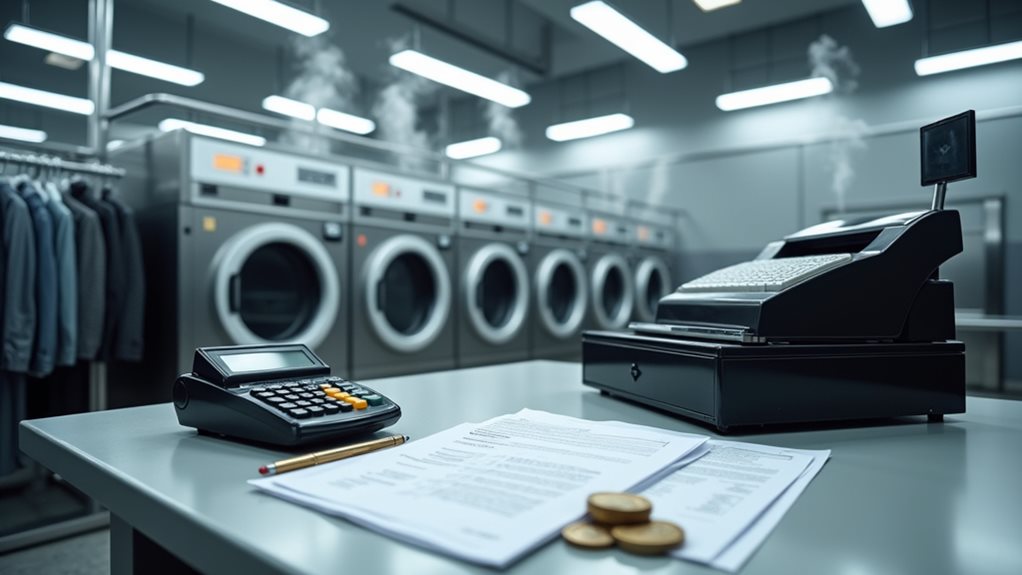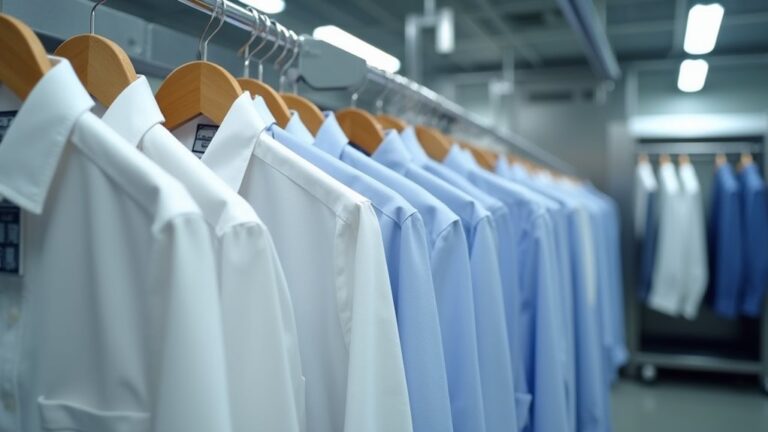When you’re trying to tackle pollution from dry cleaning, the government can impose a Pigouvian tax that forces businesses to pay for their environmental damage – basically making them internalize those hidden costs we all bear through contaminated air and water. This tax bridges the gap between what dry cleaners actually pay (private costs) and what society pays (social costs), encouraging cleaner technologies while reducing overproduction. There’s actually fascinating economic theory behind why this approach works so effectively.
Understanding Negative Externalities in the Dry Cleaning Industry
When you drop off your favorite dress shirt at the local dry cleaner, you’re probably thinking about getting those stubborn stains out, not about the invisible costs that ripple through your community like stones thrown into a pond.
Every transaction creates ripples beyond what meets the eye, carrying hidden costs that flow silently through our interconnected communities.
Here’s what’s really happening: dry cleaning creates a negative externality through pollution that affects everyone around you, yet you’re only paying the private cost on your receipt.
The social cost—including environmental damage and health impacts—far exceeds what you actually pay, creating external costs that lead to overproduction of these services.
Traditional dry cleaning operations rely on perchloroethylene (PERC), a toxic chemical solvent that can contaminate groundwater and soil while posing serious health risks to workers and customers alike.
Without a tax on dry cleaning to internalize these hidden expenses, there’s little incentive for businesses to adopt environmentally friendly practices, leaving government intervention as the logical solution.
The Role of Marginal Private Cost vs. Marginal Social Cost
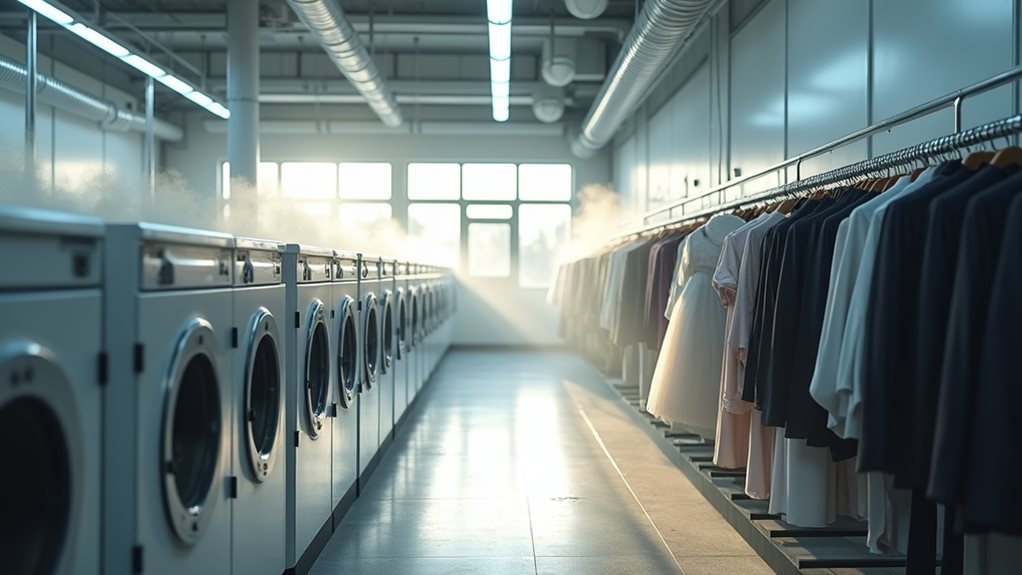
Picture yourself as a dry cleaner trying to decide whether to offer same-day service on ten more shirts—you’ll naturally think about your direct costs like labor, chemicals, and machine time, but you won’t lose sleep over the extra pollution drifting toward the elementary school next door.
This gap between marginal private cost (what you pay) and marginal social cost (what society pays) creates a classic negative externality problem that leads to overproduction of dry cleaning services.
When you don’t account for these external costs, you’re fundamentally getting a free pass on pollution while everyone else foots the bill. Traditional solvents like perchloroethylene can contaminate air, water, and soil while posing carcinogenic risks to both workers and customers. A well-designed tax can fix this by internalizing those hidden costs, pushing toward efficient allocation of resources.
How Taxation Internalizes External Costs
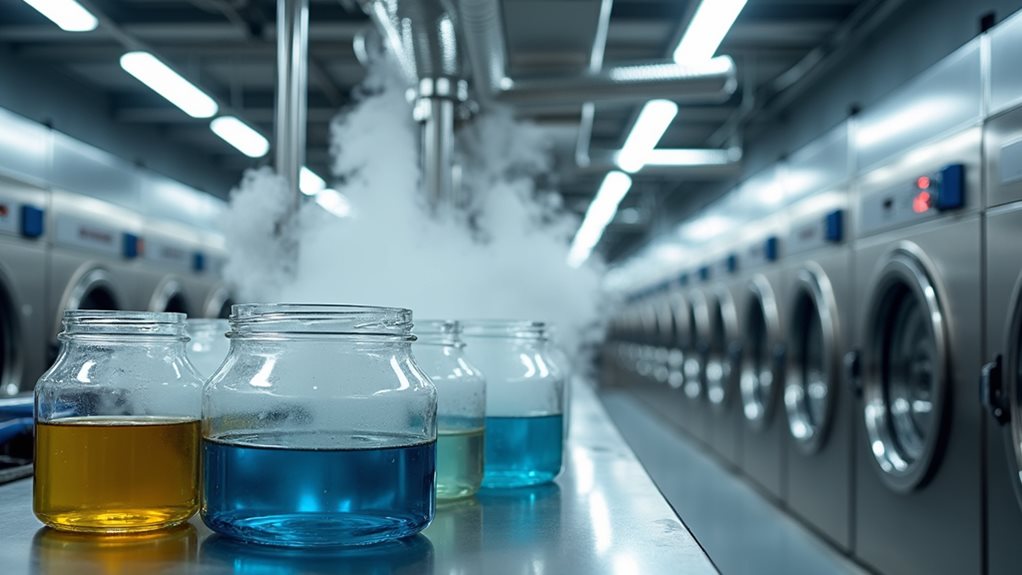
Since the dry cleaner next to my old apartment never seemed to factor in the headaches their chemical fumes gave me every morning, taxation steps in as society’s way of making sure those hidden costs finally show up on someone’s balance sheet.
You see, when you impose a tax on dry cleaning operations, you’re fundamentally forcing businesses to account for the social cost of their pollution—those pesky external costs that affect everyone around them.
This tax bridges the gap between marginal private cost and marginal social cost, transforming what economists call a negative externality into a real expense.
The beauty is that it incentivizes cleaner production methods while generating revenue for environmental initiatives, creating a win-win situation.
This Pigouvian tax approach shifts the supply curve upward, naturally reducing production to the socially optimal level where marginal social benefit equals marginal social cost.
Achieving Efficient Production Levels Through Tax Implementation
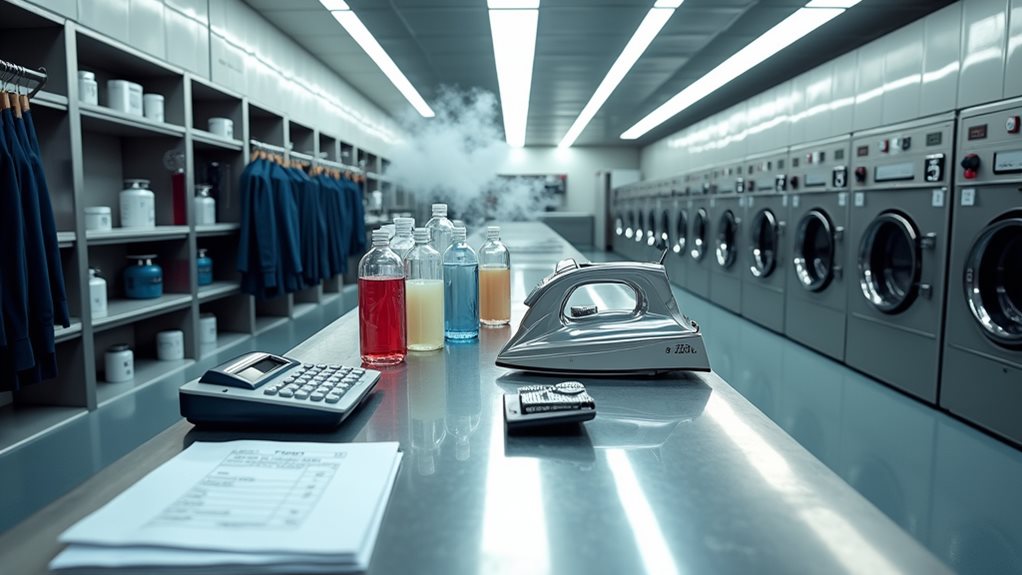
Although the theory sounds neat and tidy on paper, implementing the right tax amount feels like trying to hit a moving target while blindfolded—you’re fundamentally asking government officials to put a precise dollar figure on something as nebulous as “social harm.”
The magic happens when policymakers set that tax rate exactly equal to the marginal external cost of pollution, because that’s the sweet spot where dry cleaning businesses finally face the true cost of their operations, rather than merely their private expenses.
When you nail this balance, production costs rise just enough to push output down to the social ideal level, encouraging sustainable practices while boosting societal welfare through efficient production that accounts for all external costs.
Such taxes can incentivize dry cleaners to adopt safer alternatives like wet cleaning or liquid CO2 processes, reducing health risks for both workers and consumers while maintaining service quality.
Impact on Consumer Behavior and Market Demand
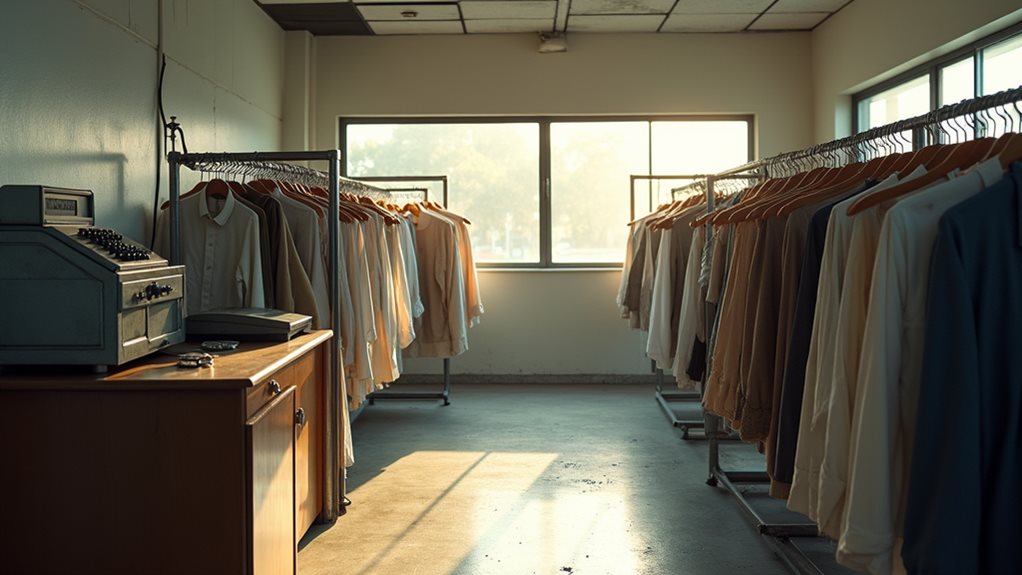
When you’re faced with higher dry cleaning prices due to taxation, you’ll naturally start weighing whether that silk blouse is really worth the extra cost. This internal debate perfectly illustrates price elasticity in action.
You might find yourself doing what I did last year when my neighborhood cleaner raised prices – suddenly discovering that some garments could survive a gentle hand wash at home, which represents a classic leftward shift in the market demand curve.
The beauty of understanding these economic principles is that you can predict how consumers will respond: the more elastic the demand (meaning people have good alternatives), the more dramatically that tax will reshape buying habits and reduce overall market consumption.
However, consumers will likely continue using dry cleaning services for high-quality garments and formal wear that cannot be safely cleaned through standard home washing methods.
Price Elasticity Effects
Understanding how consumers react to price changes becomes crucial if you’re trying to predict what’ll happen to your local dry cleaning market after a tax hits.
Price elasticity tells you whether demand will drop dramatically or just slightly wobble when that $1 tax pushes prices up. Since dry cleaning feels pretty necessary for work clothes and formal wear, you’ll likely see relatively inelastic demand—people still need their suits cleaned, even if it costs more.
However, some consumers will definitely explore alternative cleaning methods like home washing or stretching time between visits. This mixed response means market demand won’t crash completely, but production levels might dip as businesses adjust to serving fewer customers who’ve become more price-conscious about their cleaning habits.
The chemical solvents used in dry cleaning make it irreplaceable for certain delicate fabrics like silk and wool, which reinforces why demand remains relatively stable despite price increases.
Demand Curve Shifts
The real magic happens when we look beyond individual consumer choices and see how the entire demand curve actually moves in response to that dry cleaning tax.
You’ll witness something fascinating: the whole curve shifts leftward, meaning at every price point, consumers want less dry cleaning than before. This isn’t merely about elasticity anymore—it’s about fundamental changes in consumer behavior and preferences.
When that $1 tax hits, you’re not merely dealing with higher prices; you’re reshaping how people think about consumption itself. The quantity demanded drops across the board, creating powerful incentives for consumers to reconsider their cleaning habits entirely. 😊
- Consumers start viewing dry cleaning as a luxury rather than necessity
- Alternative cleaning methods become more attractive options
- Long-term preference shifts toward wrinkle-resistant clothing emerge
This shift particularly impacts demand for cleaning delicate fabrics like silk, wool, and designer garments that require specialized care to maintain their quality and appearance.
Environmental Benefits of Corrective Taxation

When you think about corrective taxation on dry cleaning, you’re witnessing one of those rare moments where government policy actually nudges businesses toward doing the right thing for our planet 🌍.
This creates powerful incentives that make pollution reduction financially smart rather than just morally good. You’ll find that these taxes work like a gentle but persistent coach, encouraging dry cleaning operations to invest in cleaner technologies because suddenly, sticking with those harsh chemical processes becomes expensive enough to hurt their bottom line.
The beauty of this approach lies in how it transforms environmental responsibility from an optional nice-to-have into a competitive advantage, where the cleaners who adopt greener methods can offer better prices while the polluters face mounting costs. By targeting harmful substances like perchloroethylene, these taxes directly address the toxic solvents that contaminate groundwater and degrade soil quality in communities nationwide.
Pollution Reduction Incentives
Although pollution taxes might sound like just another government money grab, they actually work like a gentle nudge that pushes dry cleaning businesses toward cleaner practices, much like how my neighbor finally started composting after her city added a food waste fee 😊.
When you implement a tax equal to the marginal social cost of pollution, you’re fundamentally making those hidden external costs visible to business owners, creating powerful incentives for them to reduce emissions and adopt eco-friendly technologies.
This approach transforms the economics of sustainability by making cleaner practices financially attractive:
- Revenue from the tax funds environmental programs that support industry-wide green shifts
- Businesses discover that investing in pollution control often saves money long-term
- Consumer awareness increases, driving demand for environmentally responsible dry cleaning services
These economic pressures often drive businesses to explore alternatives like steam cleaning, professional wet cleaning techniques, and other chemical-free methods that reduce their environmental impact and tax burden.
Cleaner Technology Adoption
Beyond the immediate financial motivations, corrective taxation creates a fascinating ripple effect that transforms how dry cleaning businesses approach their entire operations, much like how my cousin’s bakery completely revamped their packaging after a plastic tax made sustainable alternatives suddenly cost-competitive 🌱.
When you implement a tax on traditional dry cleaning methods, you’re fundamentally making cleaner technology more financially attractive by comparison. This shift encourages businesses to reduce emissions and pollution while addressing external costs they previously ignored.
The revenue generated can fund sustainable practices, creating a virtuous cycle where environmental impacts decrease and competitiveness increases. It’s remarkable how aligning financial incentives with environmental goals naturally pushes entire industries toward innovation.
Such taxation particularly incentivizes dry cleaners to transition away from perchloroethylene toward safer alternatives like hydrocarbon-based cleaners and liquid carbon dioxide systems that offer comparable cleaning effectiveness with reduced environmental impact.
Economic Theory Behind Pigovian Taxes
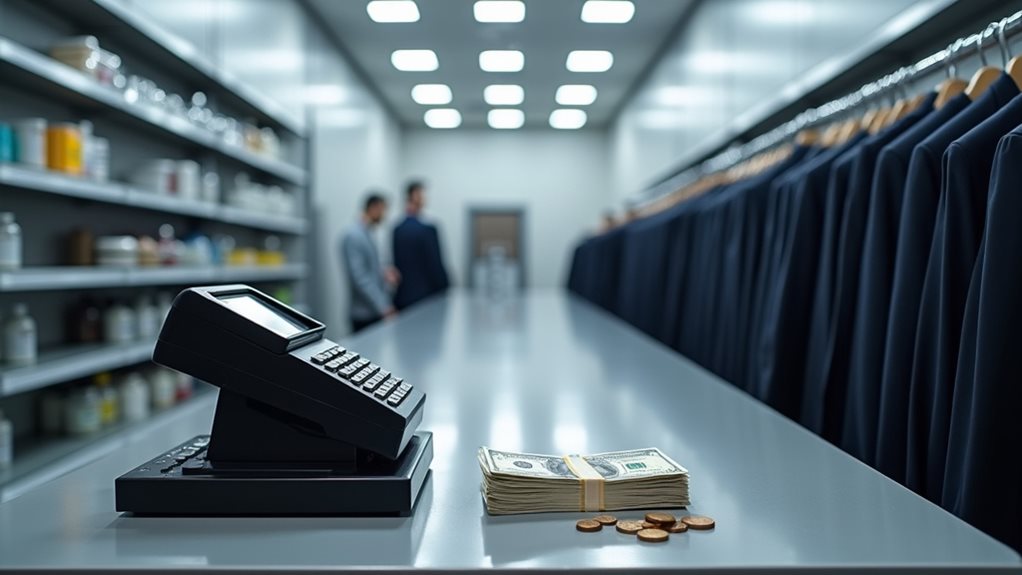
Since market failures create real headaches for society, economists developed Pigovian taxes as a clever solution to make polluters pay for the mess they’re creating.
When you’re running a dry cleaning business, your marginal private cost doesn’t include the pollution damage you’re causing to your neighbors’ health. That’s where the negative externality in production kicks in – society bears those hidden social costs while you pocket the profits.
Pigovian taxes bridge this gap by forcing you to align private costs with marginal social cost, pushing your operation toward an efficient level of production that actually considers societal welfare.
Here’s how this economic theory works in practice:
- The tax equals the exact dollar amount of environmental damage per unit of pollution from dry cleaning
- Higher costs naturally reduce consumption of a good when customers face realistic pricing
- Revenue generated can fund cleanup efforts or environmental protection programs 💰
Long-term Effects on Industry Practices and Innovation
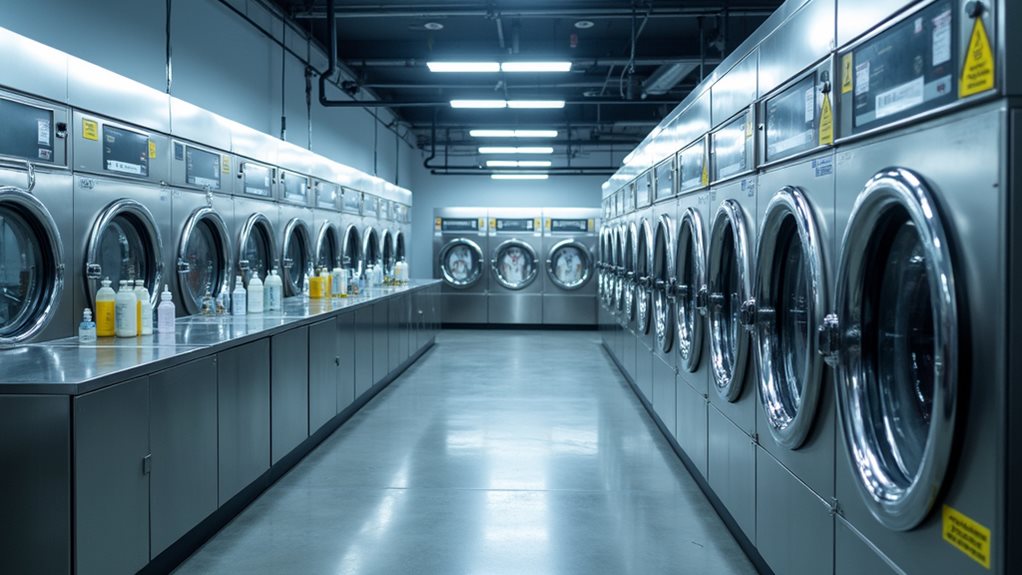
When dry cleaning businesses face sustained tax pressure, they don’t just grumble and accept higher costs – they roll up their sleeves and start innovating like their survival depends on it, because frankly, it does.
When survival’s on the line, businesses don’t just complain about costs – they innovate like their future depends on it.
You’ll witness something fascinating: the tax forces weaker players out, creating industry consolidation where only the most adaptable survive.
Smart operators channel their frustration into research and development, discovering eco-friendly solvents that actually reduce operational costs over time 💡.
These sustainable practices become competitive advantages, not burdens. The environmental impact shrinks as pollution-heavy methods get replaced by cleaner alternatives.
What starts as governmental pressure transforms into genuine innovation, with surviving firms setting new standards that ripple throughout the entire dry cleaning industry, proving that sometimes a little financial nudge creates remarkable change.

